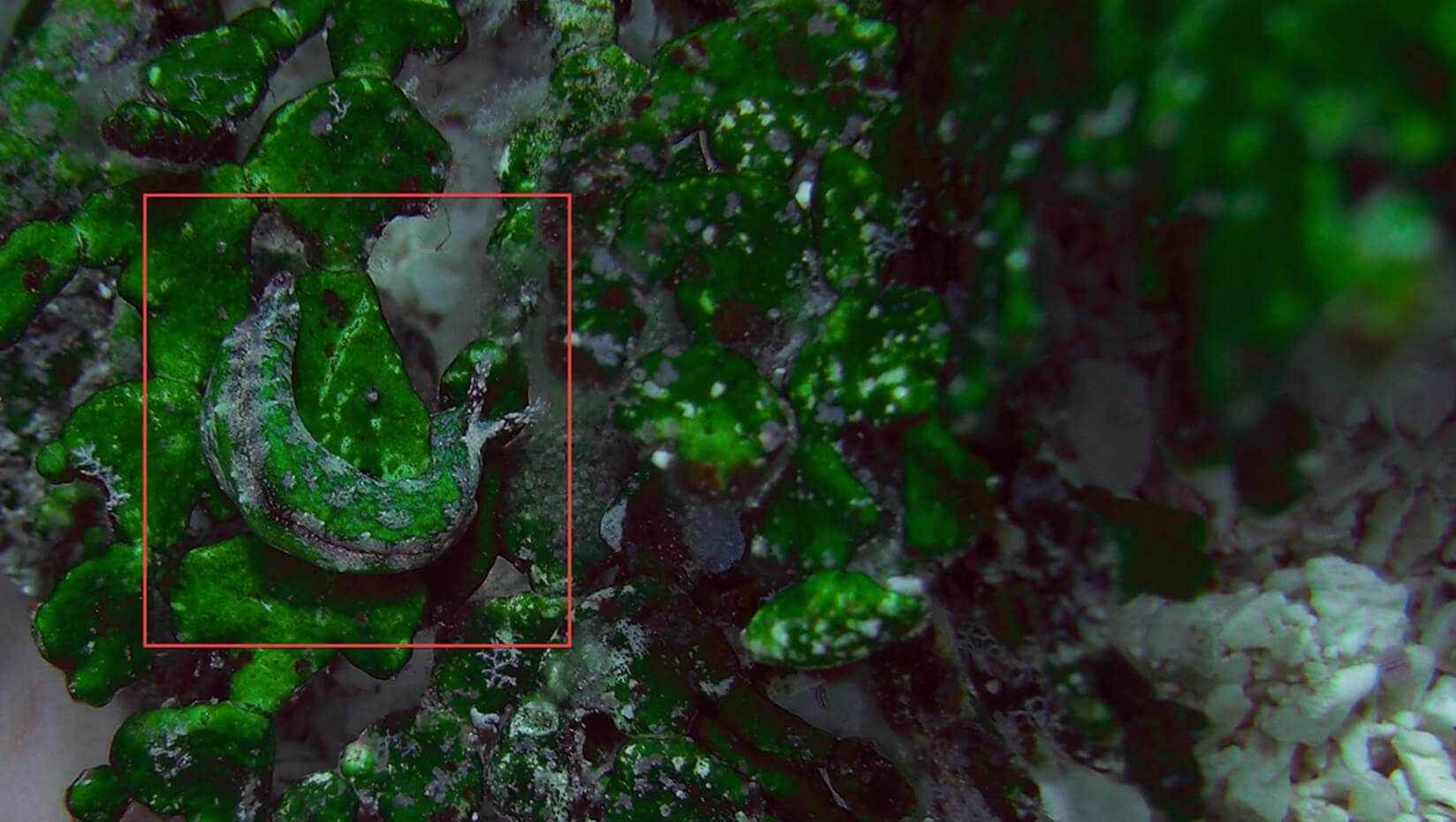
DMC scientist: Sea slug sniffs out seaweed’s chemicals, then stalks its prey
An underwater sea slug has evolved chemical foraging and defense abilities that are functionally identical to those of terrestrial insects, despite being unrelated to their land-based counterparts and living in vastly different habitats for 400 million years.
“Specialized herbivores on land and sea appear to make a living in similar ways,” says University of Maine researcher Doug Rasher, whose team’s findings have been published in the journal “Proceedings of the National Academy of Sciences.”
In seagrass beds off the Florida Keys, the sea slug Elysia tuca hunts its prey, the seaweed Halimeda incrassata, by honing in on chemical cues the seaweed emits, says the postdoctoral research associate at the Darling Marine Center.
The sea slug tracks 4-hydroxybenzoic acid released by seaweed. After locating the seaweed, the slug punctures it with its saw-like radula and sucks out chloroplasts. Since chloroplasts continue photosynthesis inside the slug, the slug becomes solar-powered, or uses light as an energy source.
This discovery is believed to be the first time an herbivore’s foraging cues have been identified in a marine ecosystem.
Rasher also discovered the sea slug preferentially attacks reproducing seaweeds by sniffing out the chemical halimedatetraacetate, a toxin the seaweed produces to ward off large generalist herbivores.
The chemical, though, is not toxic to the specialized slug. Instead, Rasher says the slug steals the toxin in order to defend itself against its own predators.
“The recent PNAS paper by Rasher and others demonstrate that from an evolutionary perspective, it pays to steal,” says UMaine marine scientist Bob Steneck.
“A sea slug seeks out and eats a toxic seaweed. It uses the seaweed’s toxins to deter its predators and obtains energy from the plants solar-powered chloroplasts. Who says there’s no free lunch? The sea slug’s lunch is not only free — it generates metabolic power for them via photosynthesis.”
Such chemical interactions are well documented in terrestrial plant-herbivore interactions. In the 1960s, for instance, medical scientist Paul Ehrlich described plant-herbivore coevolution in which caterpillars preferentially ate highly toxic plants to make themselves distasteful for predatory birds.
“It’s really impressive that hordes of Elysia are able to rapidly sniff out and swarm reproductive seaweeds, considering Halimeda reproduction is rare, patchy and only 36 hours long,” says Rasher, who was a doctoral candidate at the Georgia Institute of Technology when he made these discoveries.
Rasher says the gametes on reproductive seaweeds contain high levels of both chloroplasts and toxins — ripe for the taking — and that is likely why the sea slug preferentially seeks out reproductive seaweeds.
The team also learned that although Elysia is small and eats slowly, its feeding reduces the growth of Halimeda by about 50 percent and causes the seaweed to drop its calcified branches, apparently to avoid fungal infection and to rid itself of the slug.
In light of these findings, Rasher says, “The grazing impacts of this small, camouflaged herbivore went previously unnoticed, but they appear very important because Elysia’s prey helps to create seagrass habitats and the sediments that accumulate in them.”
Rasher conducted research for the paper “Marine and terrestrial herbivores display convergent chemical ecology despite 400 million years of independent evolution” with E. Paige Stout, Sebastian Engel, Tonya L. Shearer, Julia Kubanek and Mark E. Hay, also from the Georgia Institute of Technology.
Last year, he won the prestigious Mercer Award for publishing an outstanding ecological research paper before the age of 40. In winning the award, Rasher joined influential scientists, and some of his role models — E.O. Wilson, Jane Lubchenco, Robert MacArthur and Joseph Connell — as a recipient.
Contact: Beth Staples, 207.581.3777
